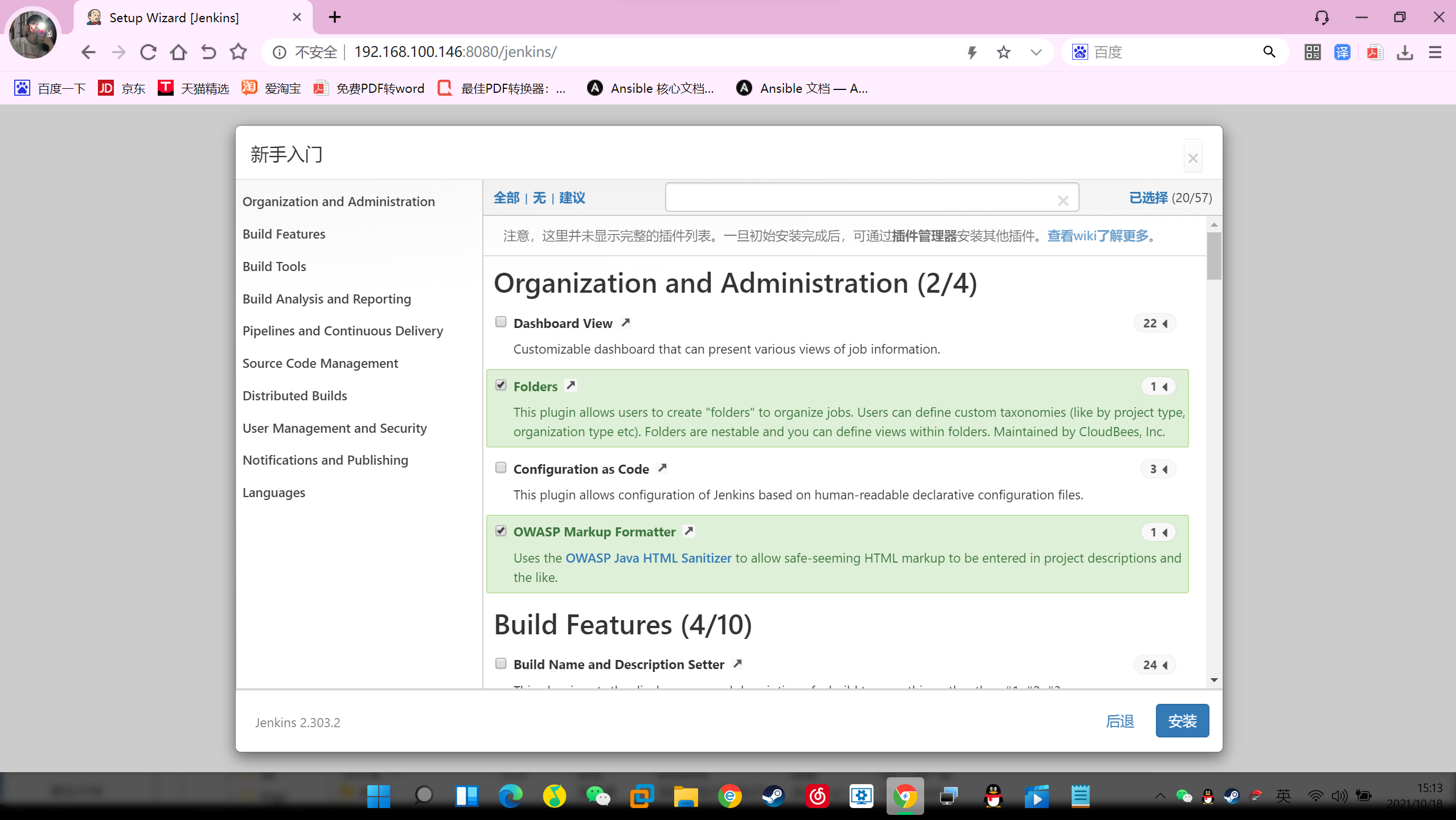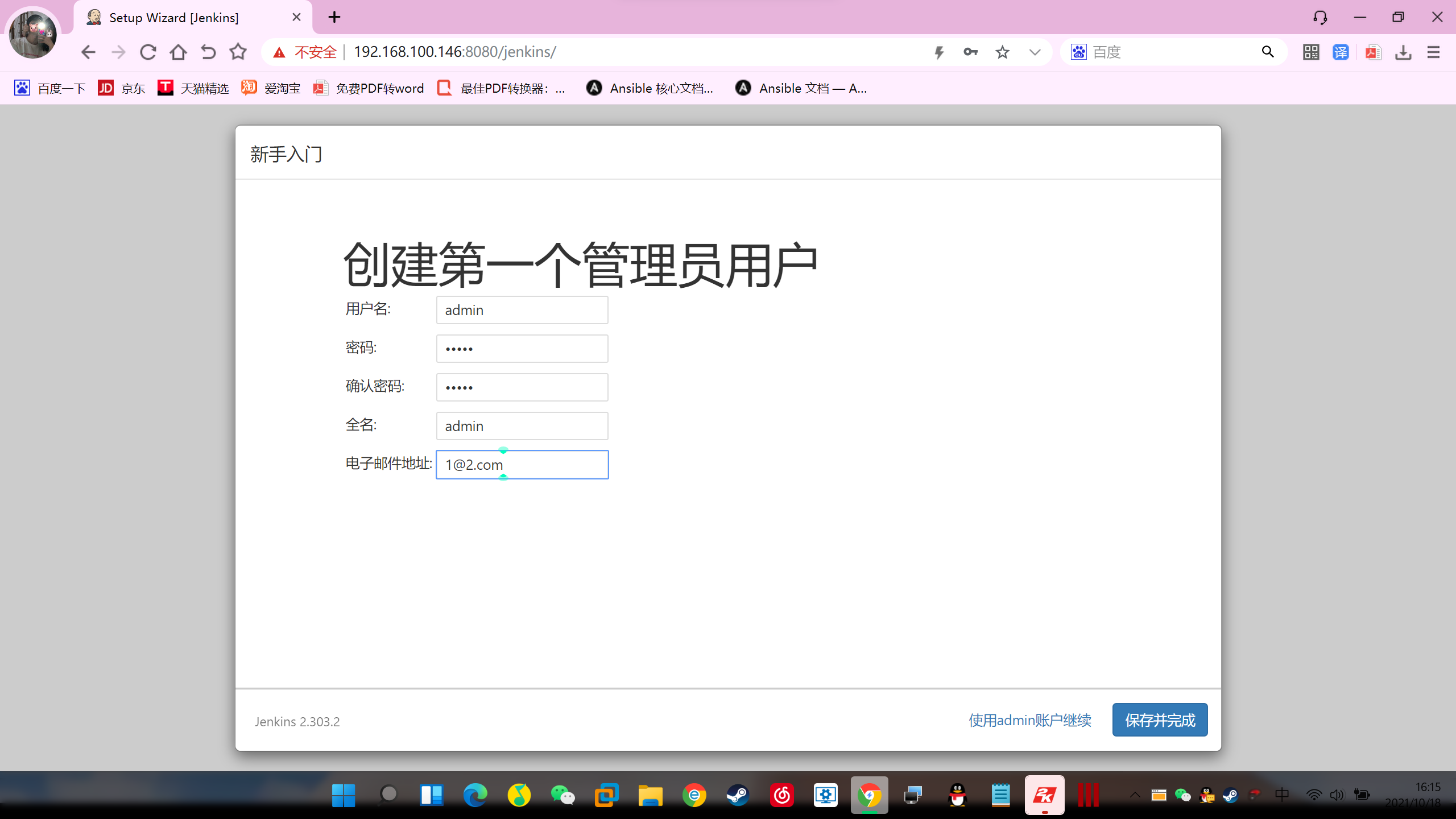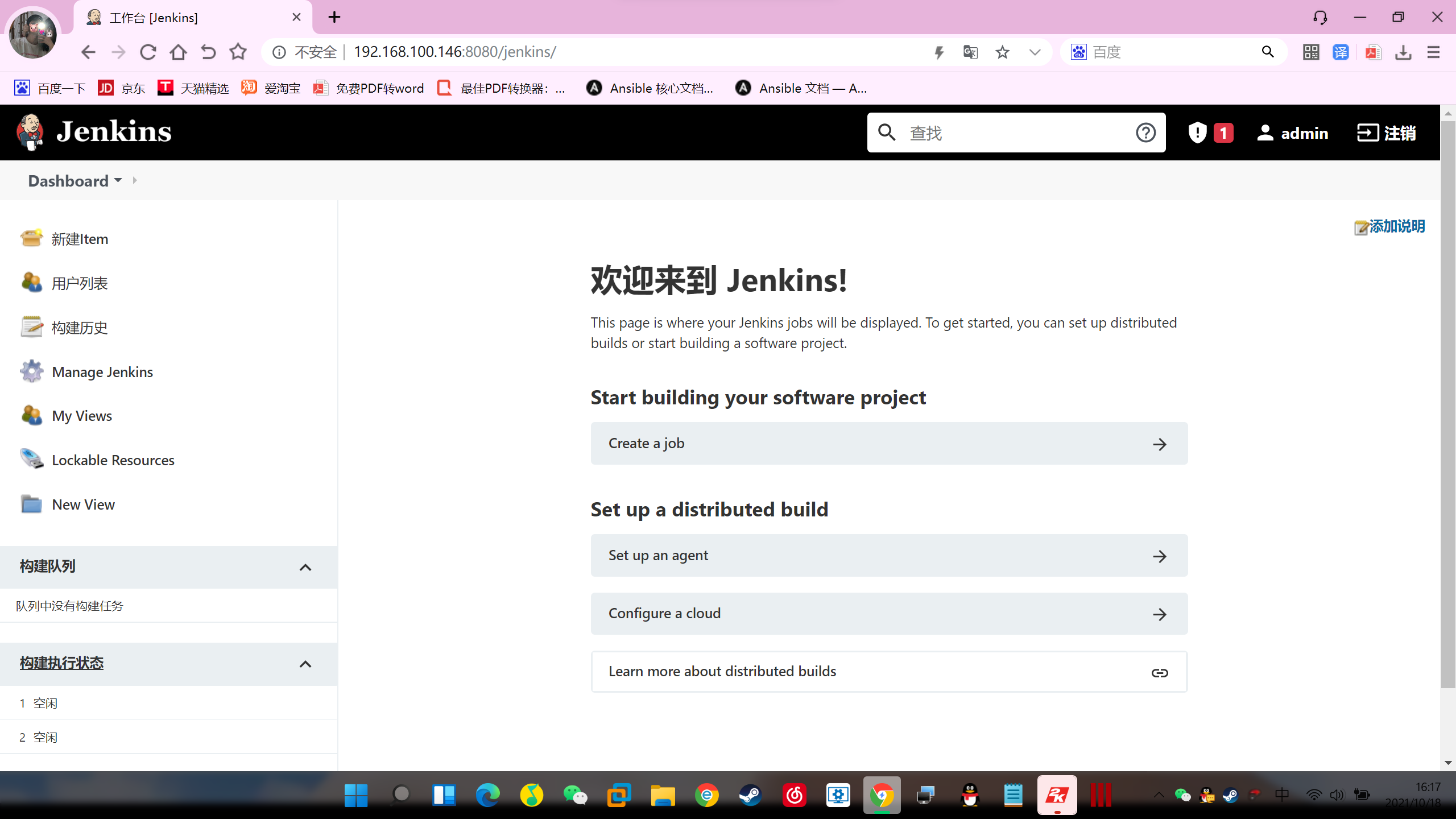CICD concept and jenkins deployment
1.CICD process
What is CICD
CICD is short for Continuous Integration, continuous delivery and Continuous Deployment. It refers to the automatic implementation of a series of processes from development to deployment in the development process, so as to minimize manual intervention.
Continuous integration
Continuous integration refers to a series of processes such as testing and building after and pushing the code to the remote warehouse and before this submission is merged into the main branch. Suppose that the code of an application is stored on gitlab, and the developer pushes many submissions every day. For each push, you can create a series of scripts for automatic testing to reduce the probability of introducing errors into the application. This is continuous integration, which can be applied to multiple branches, including development branches.
Continuous deployment
Continuous deployment goes further on the basis of continuous integration, which refers to the deployment of the default branch of the warehouse to the product environment. If this part needs to be triggered manually, it is a Continuous Delivery phase.
CICD process
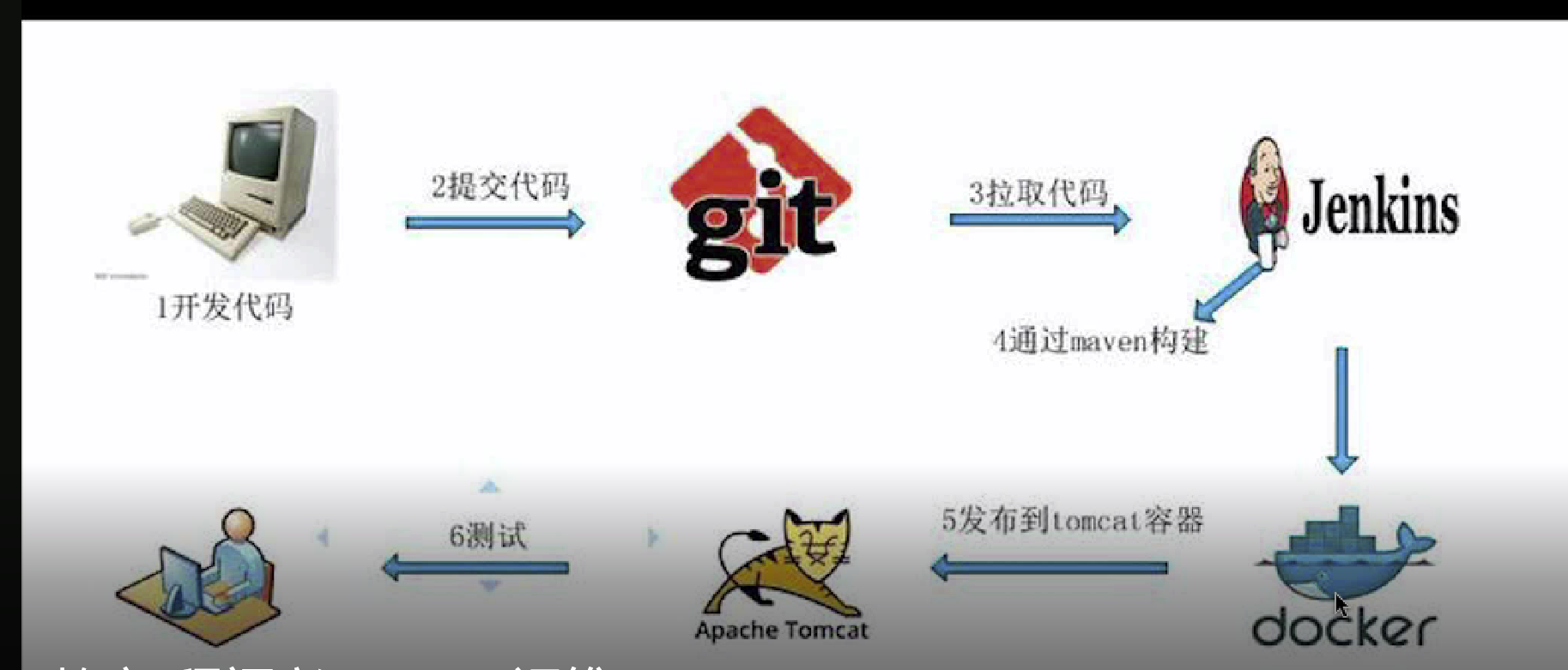
CI
1. First, the developer writes the corresponding code (after writing, submit the code to gitlub)
2. Write the code and then package it
3. After packaging, deploy.
4. After the release is completed, then the tester tests
(for development, and testing, even if it breaks down, you can redeploy another one)
(it is not suitable for production environments because customers are using it)
CD
Continuous interaction
5. After the tester has no problems, he will put it in the code warehouse (put it in the docker and package it into a docker image)
Continuous deployment
Pull an image from the docker and deploy it in the production environment
6. For continuous deployment, we should release manually, not CICD automatically, because we don't know when to release, we must get an accurate release time, and then go through the process. After the process is passed, we can release manually. All our continuous deployment should be released manually.
2. What is jenkins
Jenkins is an extensible continuous integration engine.
Mainly used for:
- l continuously and automatically build / test software projects.
- l monitor some regularly executed tasks.
Jenkins features include:
- Easy to install - just deploy jenkins.war to the servlet container without database support.
- l easy to configure - all configurations are implemented through the web interface it provides.
- l integrate RSS/E-mail to publish the construction results through RSS or notify by e-mail when the construction is completed.
- l generate JUnit/TestNG test report.
- l distributed build support Jenkins enables multiple computers to build / test together.
- l file identification: Jenkins can track which build generates which jars, which build uses which version of jars, etc.
- l plug in support: it supports extensions. You can develop tools suitable for your team.
function
Automated construction is Jenkins' function. He can use a variety of scripts to help you complete your construction requirements
Jenkins is a continuous integration tool developed based on Java, which is used to monitor continuous repetitive work. Its functions include:
1. Continuous software release / test project.
2. Monitor the work performed by external calls.
3.jenkins deployment
First, we need to deploy tomcat. After tomcat deployment is completed, we will deploy jenkins. Because I have already deployed jenkins, I will deploy jenkins directly
Download package
[root@centos8-1 ~]# wget http://mirrors.jenkins.io/war-stable/2.303.2/jenkins.war --2021-10-18 02:38:33-- http://mirrors.jenkins.io/war-stable/2.303.2/jenkins.war Resolving host mirrors.jenkins.io (mirrors.jenkins.io)... 52.202.51.185 on connection mirrors.jenkins.io (mirrors.jenkins.io)|52.202.51.185|:80... Connected. Issued HTTP Request, waiting for response... 302 Found Location: http://ftp-chi.osuosl.org/pub/jenkins/war-stable/2.303.2/jenkins.war [follow to new URL] --2021-10-18 02:38:34-- http://ftp-chi.osuosl.org/pub/jenkins/war-stable/2.303.2/jenkins.war Resolving host ftp-chi.osuosl.org (ftp-chi.osuosl.org)... 64.50.236.52, 2600:3402:200:227::2 on connection ftp-chi.osuosl.org (ftp-chi.osuosl.org)|64.50.236.52|:80... Connected. Issued HTTP Request, waiting for response... 200 OK Length: 72334258 (69M) [application/x-java-archive] Saving to: "jenkins.war" jenkins.war 100%[======================================>] 68.98M 251KB/s Time 4 m 38s 2021-10-18 02:43:13 (254 KB/s) - Saved“ jenkins.war" [72334258/72334258]) [root@centos8-1 ~]# ls anaconda-ks.cfg apache-tomcat-9.0.54.tar.gz index.jsp jenkins.war [root@centos8-1 ~]#
[root@centos8-1 ~]# cd /usr/local/tomcat/webapps/ [root@centos8-1 webapps]# mv /root/jenkins.war . [root@centos8-1 webapps]# ls docs examples host-manager jenkins.war manager ROOT test [root@centos8-1 webapps]# [root@centos8-1 webapps]# ../bin/catalina.sh start Using CATALINA_BASE: /usr/local/tomcat Using CATALINA_HOME: /usr/local/tomcat Using CATALINA_TMPDIR: /usr/local/tomcat/temp Using JRE_HOME: /usr Using CLASSPATH: /usr/local/tomcat/bin/bootstrap.jar:/usr/local/tomcat/bin/tomcat-juli.jar Using CATALINA_OPTS: Tomcat started. [root@centos8-1 webapps]# ls docs examples host-manager jenkins jenkins.war manager ROOT test [root@centos8-1 webapps]# [root@centos8-1 webapps]# ss -antl State Recv-Q Send-Q Local Address:Port Peer Address:Port Process LISTEN 0 128 0.0.0.0:22 0.0.0.0:* LISTEN 0 1 [::ffff:127.0.0.1]:8005 *:* LISTEN 0 100 *:8080 *:* LISTEN 0 128 [::]:22 [::]:* [root@centos8-1 webapps]#
Access test and deploy
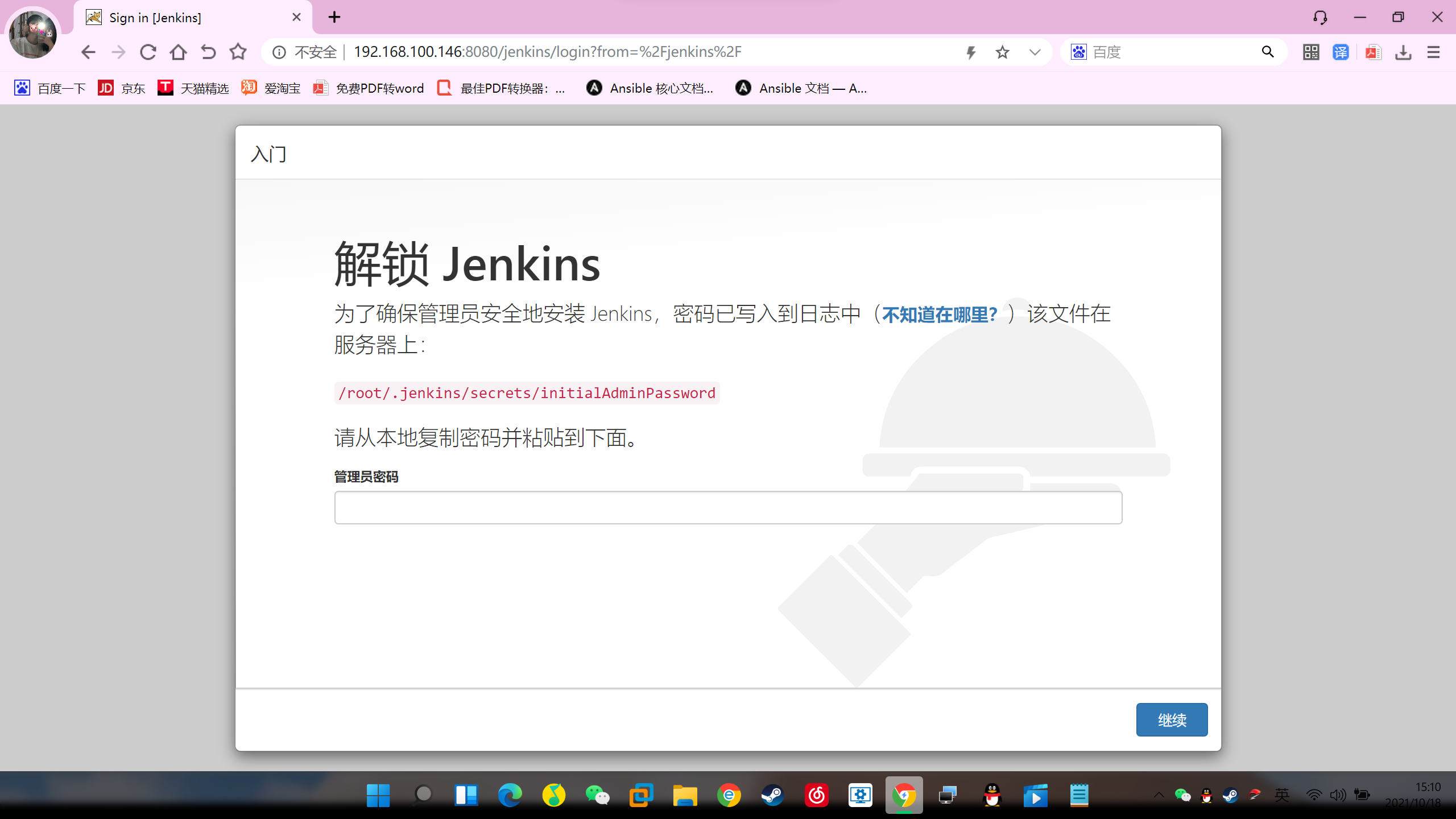
We can directly check the password here according to the above path
[root@centos8-1 webapps]# cat /root/.jenkins/secrets/initialAdminPassword d2860d669db9470e97f9e2269e949047 [root@centos8-1 webapps]#
Here we click the second (select plug-ins to install), because there are many recommended plug-ins to install
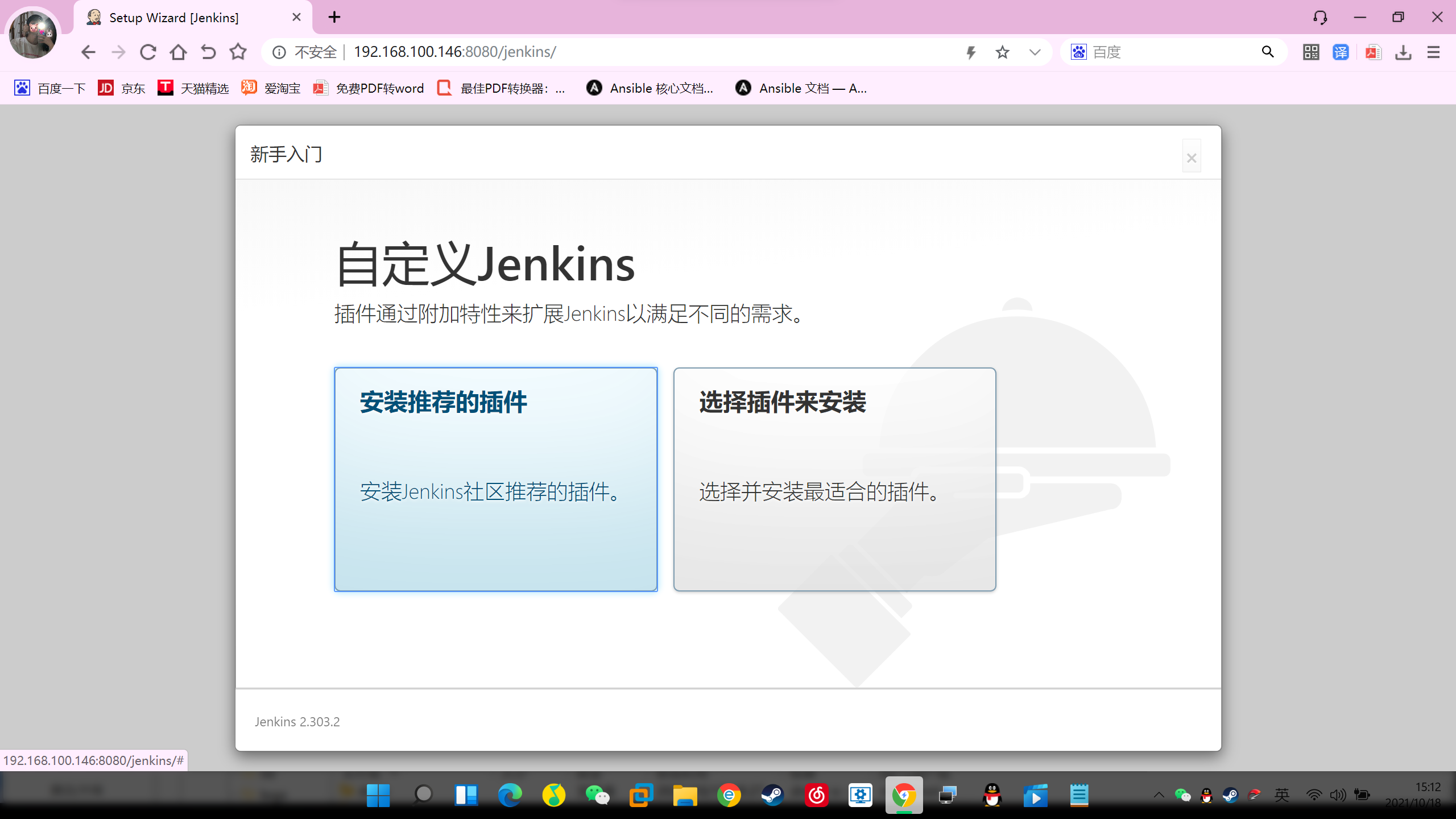
Here we directly install by default
